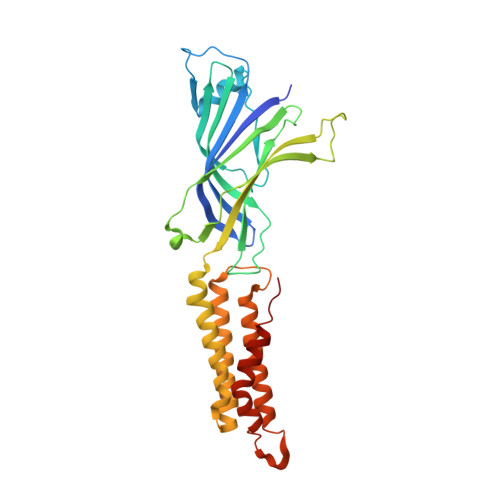Direct Pore Binding as a Mechanism for Isoflurane Inhibition of the Pentameric Ligand-gated Ion Channel ELIC.
Chen, Q., Kinde, M.N., Arjunan, P., Wells, M.M., Cohen, A.E., Xu, Y., Tang, P.(2015) Sci Rep 5: 13833-13833
- PubMed: 26346220
- DOI: https://doi.org/10.1038/srep13833
- Primary Citation of Related Structures:
4Z90, 4Z91 - PubMed Abstract:
Pentameric ligand-gated ion channels (pLGICs) are targets of general anesthetics, but molecular mechanisms underlying anesthetic action remain debatable. We found that ELIC, a pLGIC from Erwinia chrysanthemi, can be functionally inhibited by isoflurane and other anesthetics. Structures of ELIC co-crystallized with isoflurane in the absence or presence of an agonist revealed double isoflurane occupancies inside the pore near T237(6') and A244(13'). A pore-radius contraction near the extracellular entrance was observed upon isoflurane binding. Electrophysiology measurements with a single-point mutation at position 6' or 13' support the notion that binding at these sites renders isoflurane inhibition. Molecular dynamics simulations suggested that isoflurane binding was more stable in the resting than in a desensitized pore conformation. This study presents compelling evidence for a direct pore-binding mechanism of isoflurane inhibition, which has a general implication for inhibitory action of general anesthetics on pLGICs.
Organizational Affiliation:
Department of Anesthesiology, University of Pittsburgh School of Medicine, Pittsburgh, Pennsylvania, 15260, USA.
















